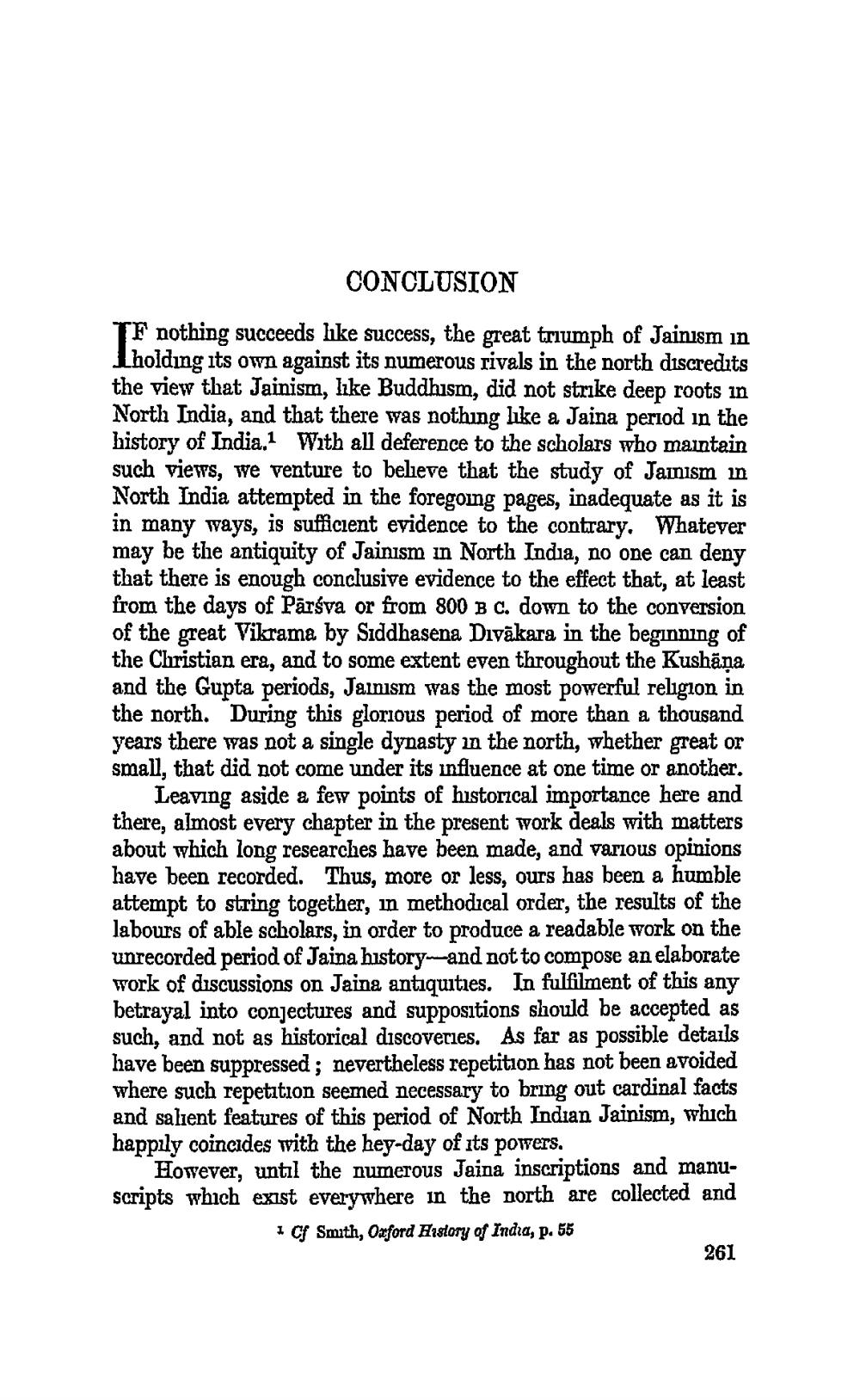________________ CONCLUSION TF nothing succeeds like success, the great triumph of Jainism in Iholding its own against its numerous rivals in the north discredits the view that Jainism, like Buddhism, did not strike deep roots in North India, and that there was nothing like a Jaina period in the history of India. With all deference to the scholars who maintain such views, we venture to believe that the study of Jainism in North India attempted in the foregoing pages, inadequate as it is in many ways, is suficient evidence to the contrary. Whatever may be the antiquity of Jainism in North India, no one can deny that there is enough conclusive evidence to the effect that, at least from the days of Parsva or from 800 B C. down to the conversion of the great Vikrama by Siddhasena Divakara in the beginning of the Christian era, and to some extent even throughout the Kushana and the Gupta periods, Jainism was the most powerful religion in the north. During this glorious period of more than a thousand years there was not a single dynasty in the north, whether great or small, that did not come under its influence at one time or another. Leaving aside a few points of historical importance here and there, almost every chapter in the present work deals with matters about which long researches have been made, and various opinions have been recorded. Thus, more or less, ours has been a humble attempt to string together, in methodical order, the results of the labours of able scholars, in order to produce a readable work on the unrecorded period of Jaina history--and not to compose an elaborate work of discussions on Jaina antiquities. In fulfilment of this any betrayal into conjectures and suppositions should be accepted as such, and not as historical discoveries. As far as possible details have been suppressed; nevertheless repetition has not been avoided where such repetition seemed necessary to bring out cardinal facts and salient features of this period of North Indian Jainism, which happily coinades with the hey-day of its powers. However, until the numerous Jaina inscriptions and manuScripts which exist everywhere in the north are collected and 1 Cf Smith, Oxford History of Indra, p. 55 261




